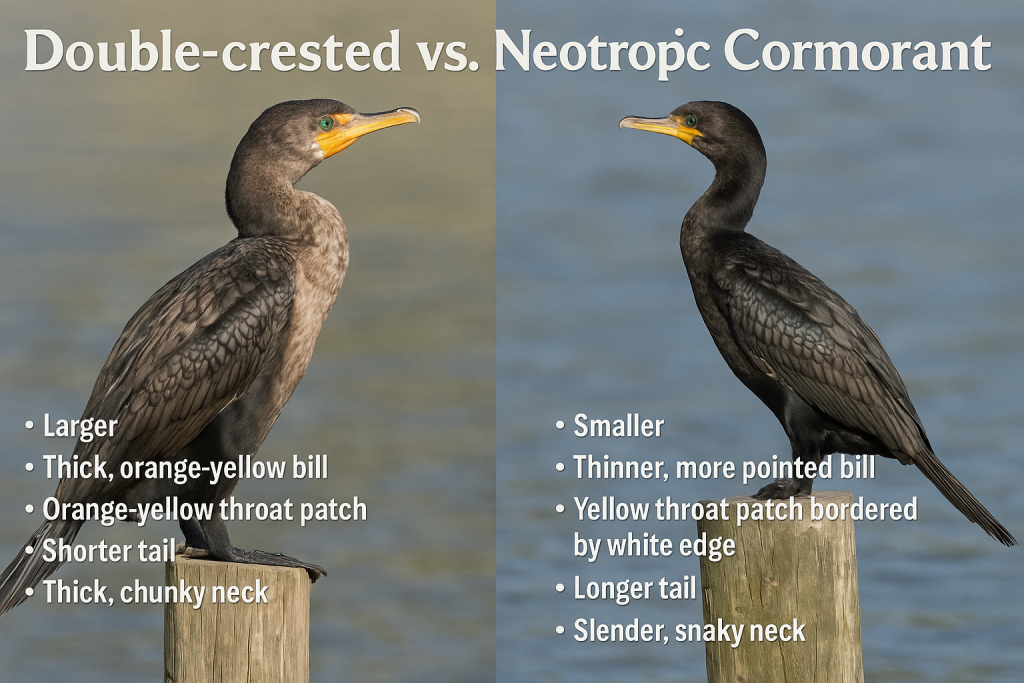
Double-crested vs. Neotropic Cormorant: The Battle of the Blackwater Birds
| Field Mark | Double-crested Cormorant | Neotropic Cormorant |
|---|---|---|
| Size | Larger (about 33 inches long) | Smaller (about 25 inches long) |
| Bill | Thick, blunt, orange-yellow base; hooked tip | Thinner, more pointed bill; yellowish base with narrow border |
| Throat Patch | Orange-yellow, smooth and rounded | Yellow throat patch at sharp angle often bordered by a distinct white edge |
| Tail | Shorter tail | Longer tail, often appears “stubby-bodied, long-tailed” |
| Neck | Thick and chunky | Slender, snaky neck |
| Habitat Preference | Lakes, rivers, reservoirs – comfortable anywhere, even ugly docks | Prefers quieter marshes and backwaters, but overlaps |
| Facial Feathers | During breeding, has short “double crests” on head | Lacks double crests |
| Voice (If you’re lucky) | Deep, guttural croaks (like a grumpy drainpipe) | Quieter and less vocal overall |
| Posture | Upright, slightly hunched | Often more horizontal, leaner build |
| Group Behavior | Large, noisy colonies, often mixed with other cormorants | Often found in smaller groups or mixed in quietly |
Narrative: Double-crested vs. Neotropic
The Double-crested Cormorant is the bigger, louder of the two. It’s got a hefty bill, a big orange throat patch, and during breeding season, sports two tiny black crests that look like it lost a bet involving a party wig.
The Neotropic Cormorant is slimmer, with a longer tail, a daintier bill, and a neat little white border around its throat patch. Its neck is long and serpentine, giving it a snake-charmer vibe as it weaves through the water.
Posture can help too. Double-cresteds look like they’re trying to sit up straight. Neotropics tend to slouch lower, stretch out, and look more aerodynamic.

More Stories
What Are Feathered Doppelgangers?
Ruby-throated Hummingbird Vs. Black-chinned Hummingbird IDs
Downey vs. Hairy Woodpeckers IDs